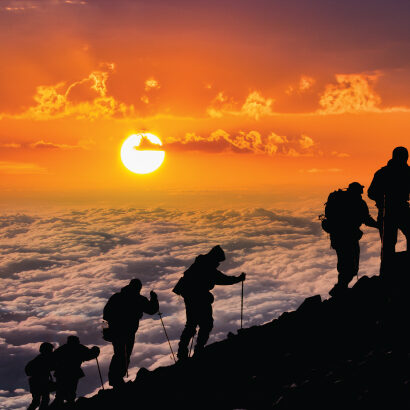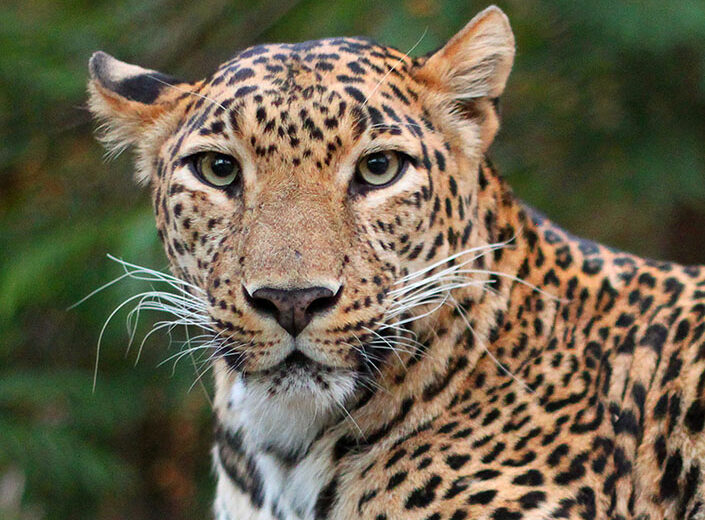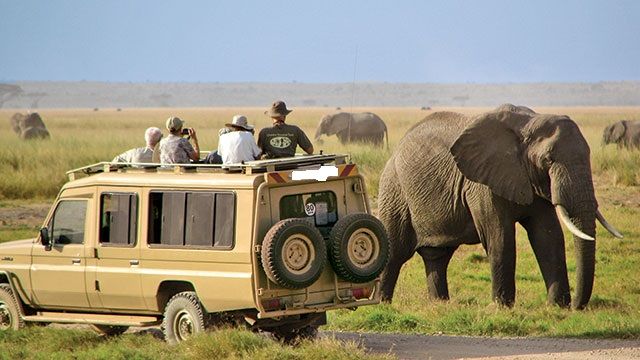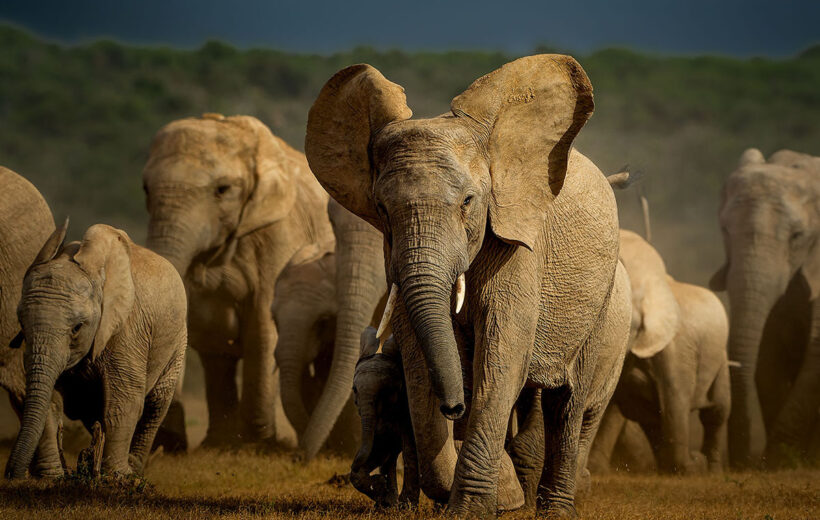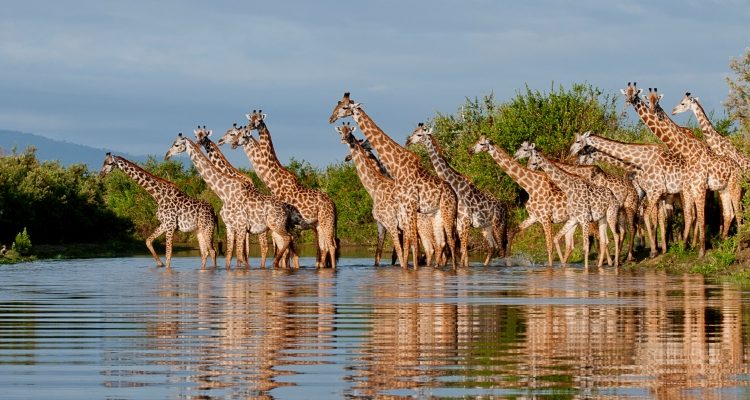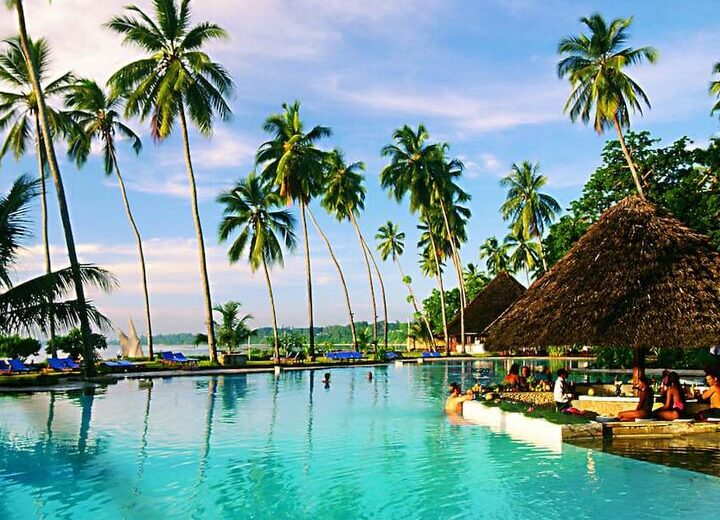Walking Safari
Walking Safari
A walking safari in Tanzania offers an intimate and immersive way to explore the stunning landscapes, observe wildlife, and experience the sights and sounds of the African bush on foot. Here's an overview of this exhilarating adventure:

Key features of Walking Safari
-
-
A walking safari in Tanzania immerses adventurers in the heart of Africa's wilderness, offering a unique and intimate experience amidst stunning landscapes and captivating wildlife. Here's an overview:
Intimate Connection with Nature: Walking safaris provide an unparalleled opportunity to connect intimately with the African bush. Stepping away from the vehicle allows travelers to feel the earth beneath their feet, breathe in the scents of the wild, and listen to the symphony of nature.
Expert Guidance and Safety: Led by highly experienced guides with in-depth knowledge of the local ecosystem, walking safaris prioritize safety while offering insights into animal behavior, tracks, plants, and the overall environment. Guides are skilled at interpreting signs of wildlife activity and ensuring a safe experience.
Close Wildlife Encounters: On foot, travelers can experience close encounters with wildlife, observing animals in their natural habitat.
-
Best Time to Visit
- Overview
- Where to Do Walking Safari
- The Best time For Walking Safari
- Cultural Experiences
- Avoiding Crowds
A walking safari in Tanzania is an immersive adventure that brings travelers up close to the raw beauty of Africa’s wilderness. Led by experienced guides, these safaris offer a unique opportunity to explore diverse landscapes, observe wildlife, and connect intimately with nature.
Key highlights of a walking safari in Tanzania include:
-
Intimate Encounters with Nature: Walking safaris provide a deeper connection to the environment, allowing travelers to feel the pulse of the bush, witness wildlife up close, and appreciate the intricacies of the ecosystem.
-
Expert Guidance and Safety: Led by knowledgeable guides, these safaris prioritize safety while offering insights into wildlife behavior, tracks, and the surrounding flora and fauna.
-
Wildlife Observation: On foot, travelers have the chance to observe a variety of wildlife, from smaller species to larger mammals, in their natural habitat.
-
Diverse Terrain Exploration: Walking through savannahs, woodlands, and riverbanks offers an intimate exploration of Tanzania’s diverse landscapes, allowing participants to discover hidden gems and follow animal trails.
-
Customized Experiences: Walking safaris can be tailored to accommodate various fitness levels and interests, offering options for short walks, full-day treks, or multi-day excursions.
-
Cultural Interactions: Some safaris incorporate visits to local communities, providing cultural insights into traditional practices and lifestyles.
-
Environmental Awareness: These safaris promote environmental conservation and awareness, emphasizing the importance of preserving natural habitats and wildlife.
A walking safari in Tanzania promises a truly immersive and educational experience, allowing travelers to connect deeply with the country’s remarkable wilderness and gain a profound appreciation for its natural wonders
Tanzania offers several fantastic locations for walking safaris, each providing unique landscapes and wildlife encounters. Here are some prominent destinations for walking safaris in Tanzania:
-
Tarangire National Park:
- Known for its diverse landscapes, Tarangire National Park offers excellent opportunities for walking safaris. Explore its riverine habitats, grassy plains, and baobab-dotted landscapes while encountering elephants, lions, and diverse birdlife.
-
Serengeti National Park:
- Some areas within the Serengeti allow guided walking safaris. While the park is famous for its extensive plains and wildlife migration, walking in certain regions provides an up-close experience with the ecosystem and its inhabitants.
-
Ngorongoro Conservation Area:
- The Ngorongoro Conservation Area, home to the Ngorongoro Crater, offers walking opportunities around the rim of the crater and in the surrounding highlands. Enjoy scenic views and wildlife encounters in this unique ecosystem.
-
Selous Game Reserve:
- The Selous Game Reserve offers walking safaris led by experienced guides, allowing travelers to explore the diverse landscapes, rivers, and woodland areas while encountering a variety of wildlife, including elephants, hippos, and crocodiles.
-
Ruaha National Park:
- Ruaha National Park, with its rugged terrain and varied landscapes, provides an adventurous setting for walking safaris. Traverse the park’s diverse habitats and observe its diverse wildlife, including lions, leopards, and numerous bird species.
-
Mahale Mountains National Park:
- For a different experience, Mahale Mountains National Park offers walking safaris in the mountains. Trek through lush forests, encounter chimpanzees, and enjoy the breathtaking scenery of Lake Tanganyika.
These destinations offer varying terrains, wildlife diversity, and experiences. However, it’s essential to note that not all parks or reserves permit walking safaris in every area, and guided walks often require the presence of an armed ranger for safety reasons. Therefore, it’s recommended to book guided walking safaris through licensed tour operators who have expertise in conducting these excursions safely and responsibly.
The best time to embark on a walking safari in Tanzania can vary based on different regions and seasonal factors. However, here’s a general guideline:
-
Dry Season (June to October):
- The dry season is often considered the ideal time for walking safaris. From June to October, Tanzania experiences less rainfall, resulting in drier landscapes and more comfortable weather conditions.
- During this period, wildlife tends to gather around water sources, making it easier to spot animals. Additionally, the reduced vegetation enhances visibility, allowing for better wildlife observation.
-
Shoulder Seasons (November to March):
- The shoulder seasons before and after the dry season can also offer good opportunities for walking safaris.
- November to December and from February to March may still provide favorable conditions, although there might be occasional showers as the dry season transitions into the wetter months.
-
Wet Season (April to May):
- The wet season, typically from April to May, experiences heavy rainfall in Tanzania. While this period might not be the most popular for walking safaris due to muddy and challenging terrain, it can offer lush landscapes, newborn wildlife, and fewer crowds.
Each season in Tanzania offers unique experiences for walking safaris. However, it’s essential to consider regional variations and specific park conditions. For instance, some parks or reserves may have restrictions on walking safaris during certain seasons due to weather conditions or safety concerns.
Consulting with experienced tour operators or safari guides familiar with the region can provide more detailed insights and help plan the best time for a walking safari based on personal preferences and desired wildlife sightings.
Incorporating cultural experiences into a walking safari in Tanzania can offer a deeper understanding of local traditions, customs, and ways of life. Here’s how cultural encounters can enrich the walking safari experience:
-
Visiting Tribal Villages:
- Some walking safaris include visits to nearby villages, allowing travelers to interact with local tribes such as the Maasai or Hadzabe. Engaging with community members provides insight into their daily routines, traditions, and cultural practices.
-
Traditional Dance and Music Performances:
- Cultural visits may involve witnessing traditional dances or musical performances by local tribes. These vibrant displays showcase traditional attire, rhythmic dances, and songs that reflect the tribe’s heritage and stories.
-
Learning Indigenous Skills:
- Travelers may have the opportunity to learn basic skills or crafts from local communities. This could involve activities like beadwork, traditional cooking methods, or even traditional hunting techniques (where permitted and ethically conducted).
-
Homestays or Cultural Exchanges:
- Some safari operators arrange homestays or cultural exchanges, allowing travelers to spend time with local families. This immersive experience provides firsthand insight into daily life, shared meals, and conversations with community members.
-
Understanding Tribal Traditions and Beliefs:
- Guides or community elders may share stories and explanations about cultural traditions, rituals, and beliefs. Learning about folklore, spiritual practices, and the significance of certain customs can deepen cultural understanding.
-
Supporting Local Artisans and Markets:
- Walking safaris may include visits to local markets or craft centers where travelers can purchase handmade crafts, artworks, or souvenirs directly from local artisans, supporting the community’s livelihood.
Cultural experiences intertwined with walking safaris offer a glimpse into Tanzania’s rich and diverse heritage, fostering cultural appreciation and promoting a meaningful connection between travelers and the local communities they encounter along their safari journey.
Avoiding crowds during a walking safari in Tanzania involves several strategies aimed at seeking more secluded and serene experiences in the wilderness. Here’s how to minimize encountering large crowds:
-
Choose Remote or Less Visited Areas:
- Opt for walking safaris in less-popular or remote regions within national parks or reserves. Explore areas that are not frequented by large numbers of tourists, offering a more private and peaceful experience.
-
Private or Customized Safaris:
- Consider booking private or customized walking safaris designed for smaller groups or personalized experiences. Private tours often allow more flexibility in routes and schedules, ensuring a quieter and more exclusive adventure.
-
Early Morning or Late Afternoon Walks:
- Schedule walking safaris during early mornings or late afternoons when wildlife is typically more active. Fewer visitors might be present during these times, enhancing the tranquility of the experience.
-
Flexible Itinerary and Routes:
- Opt for safari operators or guides willing to explore alternative paths or less-traveled routes within the reserve or park. Flexibility in the itinerary can lead to secluded spots with fewer tourists.
-
Consider Private Reserves or Conservancies:
- Choose walking safaris in private reserves or conservancies, which often have stricter visitor quotas compared to larger national parks. These areas offer more exclusive encounters with wildlife and nature.
-
Avoid Peak Seasons and Holidays:
- Plan your safari during off-peak times or avoid major holidays when tourist numbers tend to surge. Visiting during quieter periods can significantly reduce the likelihood of encountering crowds.
-
Research and Local Insights:
- Conduct thorough research and seek advice from local experts or guides who possess intimate knowledge of the area. They can suggest less-crowded spots and tailor the experience to your preferences.
By implementing these tactics and selecting the right location, timing, and safari operator, travelers can increase their chances of enjoying a peaceful and intimate walking safari experience away from large crowds in Tanzania’s stunning wilderness.

